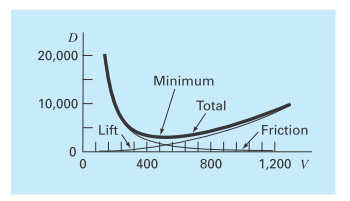
Concept explainers
The total drag on an airfoil can be estimated by

FIGURE P16.28
Plot of drag versus velocity for an airfoil.
where
(a)
(b) In addition, develop a sensitivity analysis to determine how this optimum varies in response to a range of
Want to see the full answer?
Check out a sample textbook solution
Chapter 16 Solutions
EBK NUMERICAL METHODS FOR ENGINEERS
- i) Consider the set S = {−6, −3, 0, 3, 6}. Draw a graph G whose set of verti- ces be S and such that for i, j ∈ S, ij ∈ E(G) if ij are related to a rule that t'u you choose to apply to i and j. (ii) A graph G of order 12 has as a set of vertices c1, c2, . . . , c12 for the do- ce configurations of figure 1. A movement on said board corresponds to moving a coin to an unoccupied square using the following two rules: 1. the gold coin can move only horizontally or diagonally, 2. the silver coin can move only vertically or diagonally. Two vertices ci, cj, i̸ = j are adjacent if it is possible to move ci to cj in a single movement. a) What vertices are adjacent to c1 in G? b) Draw the subgraph induced by {c2, c6, c9, c11}arrow_forwardProve for any graph G, δ(G) ≤ d(G) ≤ ∆(G) using the definition of average degree, make a formal proofarrow_forwardRestart box ixl.com/math/grade-6/area-of-compound-figures-with-triangles ass BModules Dashboard | Khan... Grades 6-8 Life S... t Typing Lessons BDashboard f IXL My IXL Learning Assessm Sixth grade >GG.12 Area of compound figures with triangles 5V2 What is the area of this figure? 4 km 2 km 5 km 4 km 2 km Learn with an example 13 km Write your answer using decimals, if necessary. square kilometers Submit Area of compound figures Area of triangles (74) Work it out Not feeling ready yet? Thesarrow_forward
- Algebra & Trigonometry with Analytic GeometryAlgebraISBN:9781133382119Author:SwokowskiPublisher:Cengage
 Algebra: Structure And Method, Book 1AlgebraISBN:9780395977224Author:Richard G. Brown, Mary P. Dolciani, Robert H. Sorgenfrey, William L. ColePublisher:McDougal Littell
Algebra: Structure And Method, Book 1AlgebraISBN:9780395977224Author:Richard G. Brown, Mary P. Dolciani, Robert H. Sorgenfrey, William L. ColePublisher:McDougal Littell Trigonometry (MindTap Course List)TrigonometryISBN:9781305652224Author:Charles P. McKeague, Mark D. TurnerPublisher:Cengage Learning
Trigonometry (MindTap Course List)TrigonometryISBN:9781305652224Author:Charles P. McKeague, Mark D. TurnerPublisher:Cengage Learning  Functions and Change: A Modeling Approach to Coll...AlgebraISBN:9781337111348Author:Bruce Crauder, Benny Evans, Alan NoellPublisher:Cengage Learning
Functions and Change: A Modeling Approach to Coll...AlgebraISBN:9781337111348Author:Bruce Crauder, Benny Evans, Alan NoellPublisher:Cengage Learning College AlgebraAlgebraISBN:9781305115545Author:James Stewart, Lothar Redlin, Saleem WatsonPublisher:Cengage Learning
College AlgebraAlgebraISBN:9781305115545Author:James Stewart, Lothar Redlin, Saleem WatsonPublisher:Cengage Learning Algebra and Trigonometry (MindTap Course List)AlgebraISBN:9781305071742Author:James Stewart, Lothar Redlin, Saleem WatsonPublisher:Cengage Learning
Algebra and Trigonometry (MindTap Course List)AlgebraISBN:9781305071742Author:James Stewart, Lothar Redlin, Saleem WatsonPublisher:Cengage Learning





